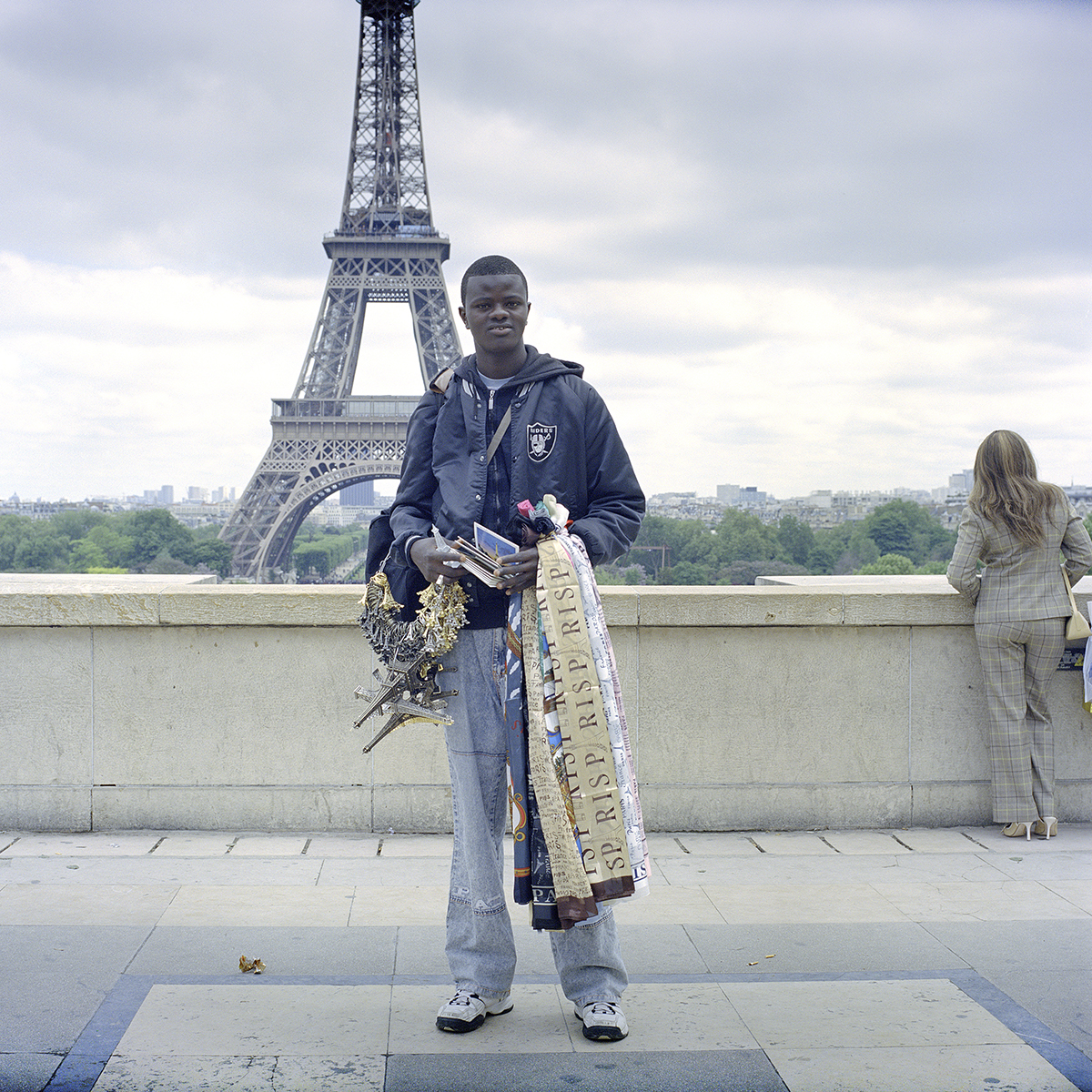Around 10.5 million people live in the Paris region. Almost 80,000 of them are migrants without regular residence status, the so-called ‘Sans Papiers’.
Paris is moving, historically interesting and important in every respect for culture. It stands at every station steeped in history, most ‘vis-à-vis’ but especially here at the city’s landmark, the Eiffel Tower. Opposite is the Esplanade du Trocadéro, framed by Avenue Paul Doumer to the northeast and Avenue des Nations Unies to the southeast, on the right bank of the Seine, on the hill of Chaillot, between the Marine Museum and the Théâtre National de Chaillot, a large square from which one can look up at the Eiffel Tower. Below this square, a garden and fountain spout its fountain towards the Eiffel Tower. In the surrounding parks and on the paths around the fountain are groups of people, each of whom could be assigned to a country or skin colour. The Esplanade du Trocadéro is white – the marble floor as well as the tourists pouring over it from the Place du Trocadéro et du 11 Novembre buses. In between, there are black men with holiday souvenirs over their arms or on their hands or on spread blankets. Often you can see or hear the metallic jingling of small Eiffel Tower replicas. The men come from North Africa, from the former French colonies in sub-Saharan Africa and the Caribbean. The language is theirs, so it is easiest for them to get to France. They can’t find work and the smugglers who usually bring them here earn money not only from smuggling but also from trading the goods that pay for their accommodation, where they are allowed to live in hiding. Everything is organised and in the end they have escaped an economic or political misery but ended up in slavery, plus they live in constant fear of being convicted and deported.
Tourists bringing royalties into the country overflow the landmarks and are surrounded by them. The men try to sell the country’s landmark to the tourists, who would prefer to expel them. There are sieves of people, one gets the impression, if you stand on the Esplanade du Trocadéro and wait, you will see that every half hour on the elevated plain, where the tourists are also let loose, squad cars stop and with them policemen with batons and cable ties and make catches on the ‘sans papiers’, who escape through the parks laid out to the west and east or down towards the banks of the Seine to the Eiffel Tower.










